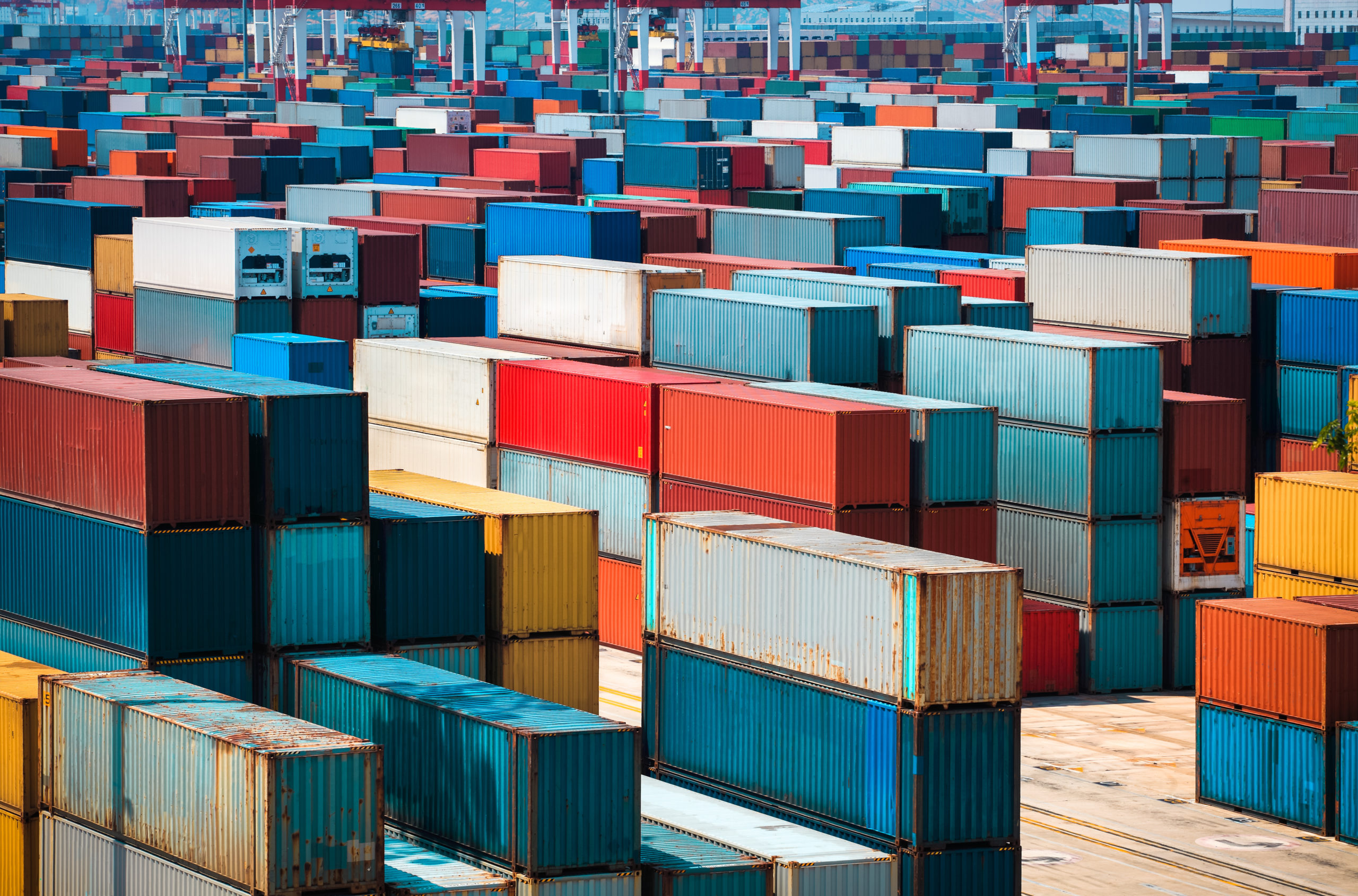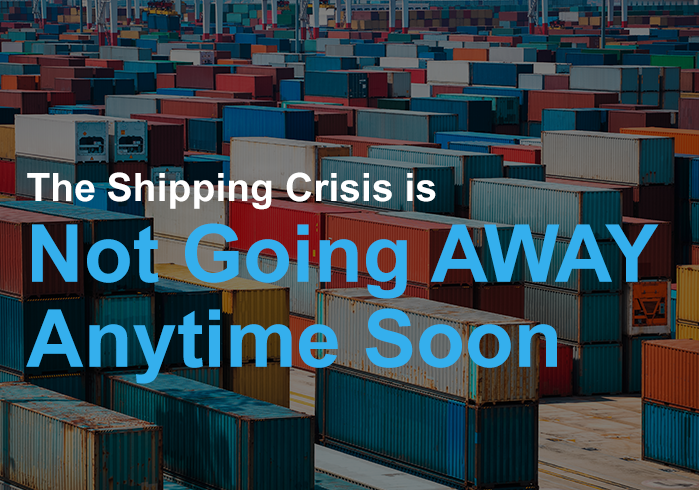
Many ports in the shipping industry are either fully backed-up or near a crisis point. The backlog has led to an exponential deterioration in the overall performance of the industry. This is an industry with legacy systems and procedures that don’t always respond well to the challenges that are being experienced in the sector.
Experts are warning all participants to prepare for a significant period of chaos and disruption. Some are talking in terms of years; rather than days, weeks, or months. When ships were backed up in the Suez Canal, the media made a fuss about an industry in the throes of disconnection. However, this is only the beginning and represents the surface of the real problem.
The shipping industry is sitting on an iceberg of potential crises relating to the demand and supply of shipping space. Inefficient systems will make it increasingly difficult to deliver the standard of customer care that businesses expect and demand from the sector. This is an industry that has a tendency to go into downward spirals when things go wrong. That is why it is likely to take a long time to get things working well again. So, what exactly is this crisis of shipping that people are talking about?
Long queues and stuck ships are holding up business
Perhaps there is no better demonstration of the shipping crisis than the significant backlogs that have been recorded in the busy ports of Los Angeles and Long Beach. It is estimated that as many as three dozen ships may be held up, and sometimes considerably more. It did not help matters that “Ever Given” was notoriously stuck in the Suez Canal.
Meanwhile volumes continue to rise to unprecedented levels. In May alone, the combined volumes at terminals came to 1.9 million containers. To put this in context, the low point of volumes during the pandemic period was March 2020 and the containers then were half of what they are today.
Every crisis has its flashpoint and icons. In the case of shipping, it was the symbolism of “Ever Given” being stuck in the Suez Canal. This 20,124-container behemoth represents the advancement of technology in shipping, but also its weak points. For nearly a week, the vessel was stuck and hundreds of other ships trying to get to Europe and Asia had nowhere to pass.
Meanwhile the Covid-19 outbreak has brought new chaos to the port of Yantian in the Chinese city of Shenzhen. Not only are the destinations in trouble, but the source ports are also beginning to feel the pressure. It is not surprising that scheduling for the entire month has been severely hampered.
The market has responded by hiking prices. For example, you need a minimum of $10,000 to move a 40-foot container from Shanghai to Rotterdam. These costs are adding pressure on an already volatile sector. Many of these problems started out locally but are now international crises.
Internationalization of local shipping problems
The shipping industry is so interconnected that any dislocation in any part of the chain is bound to affect a significant portion of the sector. Whereas the industry was operating well within a static and predictable environment, it has been markedly less effective in a new era of uncertainty. Those that predicted an easing or cessation of the uncertainty are living to regret their suppositions. The determinants of the current pricing craze are not about to go away anytime soon.
This is a lot more than a temporary coordination problem. It is about a market that has changed and an industry trying to find its place in the new normal. Many years may pass before the players in the shipping industry are able to handle its divergent challenges that have become so exposed during the Covid-19 era. It seems incredible to imagine the carriage of a metric ton of goods from Shanghai to Rotterdam was once as low as $10 but now people are talking in thousands of dollars.
Some have remarked, wryly it must be said, about the hiked prices that wiped away the modest operating profit that the likes of AP Moller-Maersk A/S made during the lowest pricing phases. This is the world’s biggest shipping line. Under normal circumstances, it should have the clout to deal with anybody and anything. However, Covid-19 is trying the giants as well as the little people in shipping. We think of symbolic and practical hiccups such as the “Boxer Rebellion” as being key dynamics in this new market.
Impact of the “Boxer Rebellion”
There are simply no boxes to spare, and experts have labeled this critical situation as the “Boxer Rebellion”. Consequently, container rates are on the rise. Others are in the wrong place at the wrong time. Meanwhile demand is not letting up, the high prices notwithstanding. Profits are possible, but only if the shipping industry can adjust to rapidly changing market dynamics.
China is currently the land of opportunity and despair. For example, there is a surge in container rates for exports coming from China. Meanwhile, return prices are also rising because there is a shortage of boxes. The pandemic was short, but very sharp for the shipping industry. Volumes had exceeded their seasonally adjusted levels between January and February. Problems started manifesting as far back as September 2020.
Wealthy countries are in dire need of medical equipment to deal with hospital cases, vaccination, and preventative measures. At the same time, consumer spending on durable goods is picking up as people begin to contemplate a life after lockdown. The desire to buy online means that there will be a lot of cargo doing the global rounds. Time is of the essence, so shipping companies are willing to return with empty vessels so that they can shave off waiting times.
The story of vacant boxes returning to China was bound to create problems in the developing world. North America and Europe no longer have container space. Similarly, there are shortages in Asia which mean high demand for shipping space. Getting a quote for shipping in these circumstances is shocking in terms of the price hikes. This is all part of the greater shifts and transitions within the shipping sector.
Bigger issues still pending in the shipping industry
As the industry cuts back investment, there is a growing need for space. People need their boxes in the right places at the right times. Additionally, the shipping industry has been accused of not paying enough attention to environmental concerns. This has attracted self-regulation to avoid imposed regulation. The flexibility that the industry once enjoyed is now practically gone.
Fuel consumers on a grand scale are no longer welcome in shipping. Yet, it was these environmentally unfriendly vessels that could cope with the sheer volume of international trade. Meanwhile, the trade war between America and China (which was spearheaded by President Donald Trump) handicapped some industries. One of those affected industries was ship building. Consider the paltry $2.9 billion Maersk capital investment since the beginning of 2019. This figure is hardly greater than a single quarter for the same company in 2014. Nobody wants to bet their money in a volatile market.
Wrapping up
All these challenges highlight the ongoing reality of a volatile shipping industry. There is limited time to get things back to normal and the backlog is growing. There is a need for a more long-term look at solutions that are structural rather than reactionary. Otherwise, there is a lot of pain heading towards this industry in the years to come.


